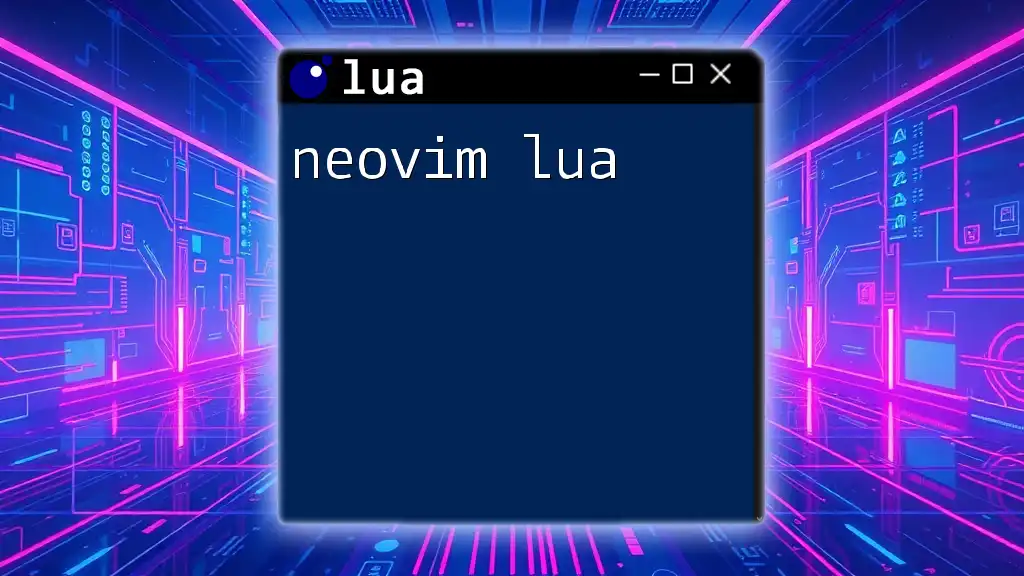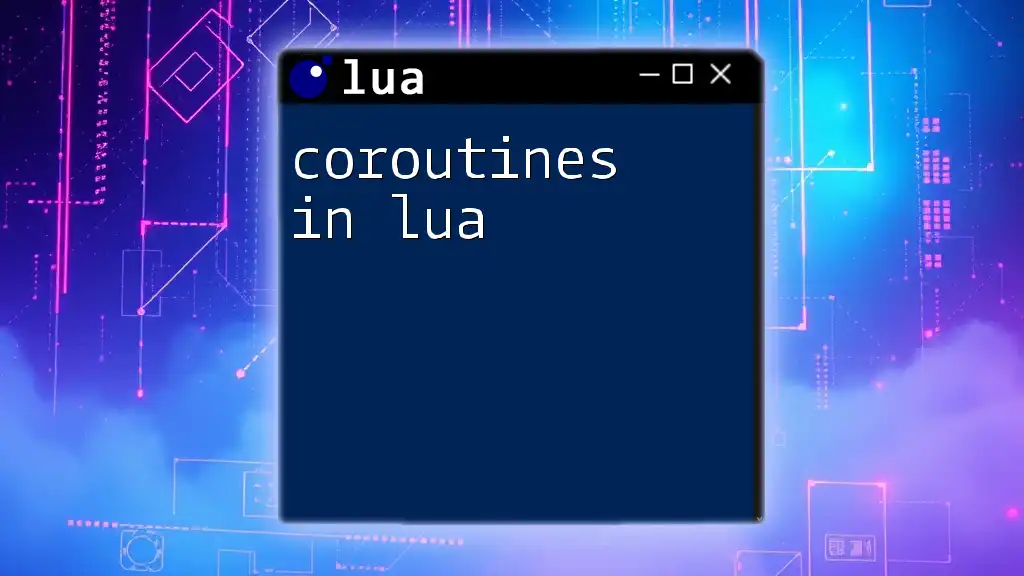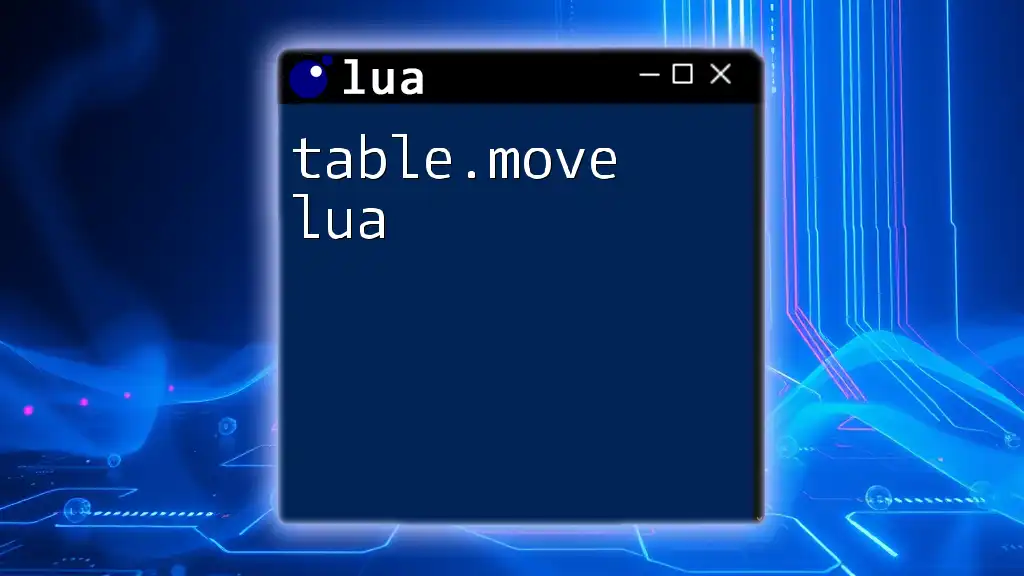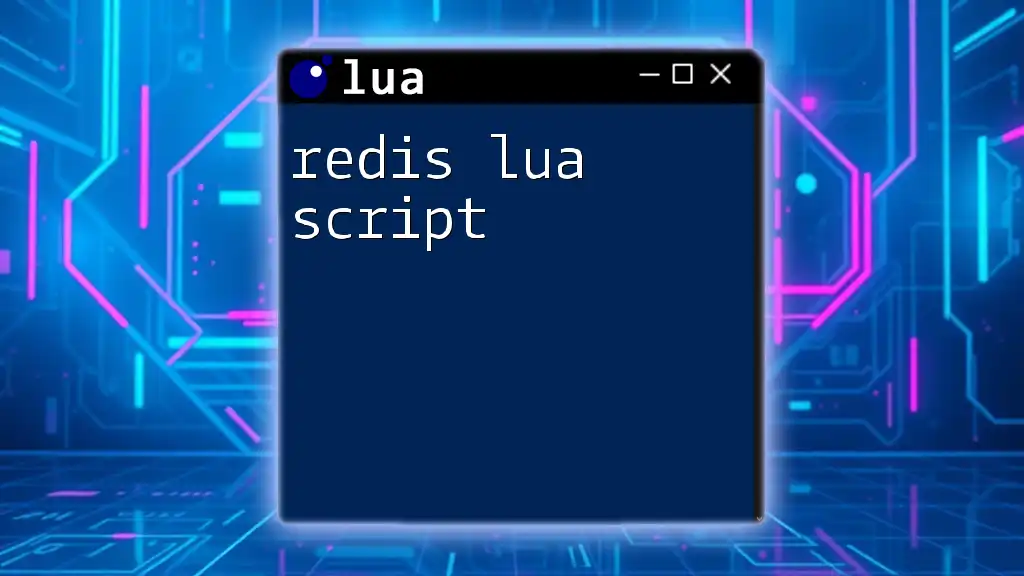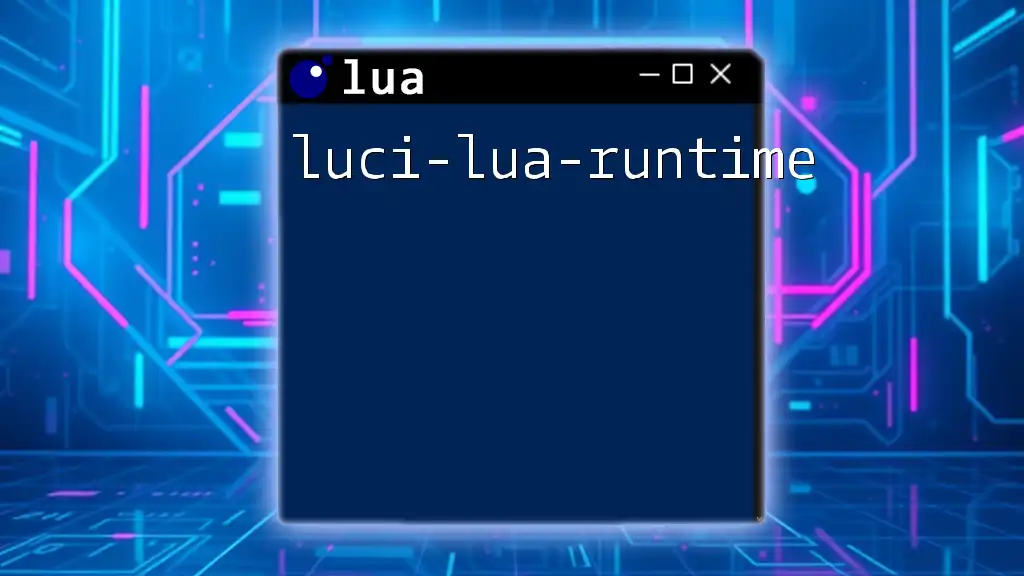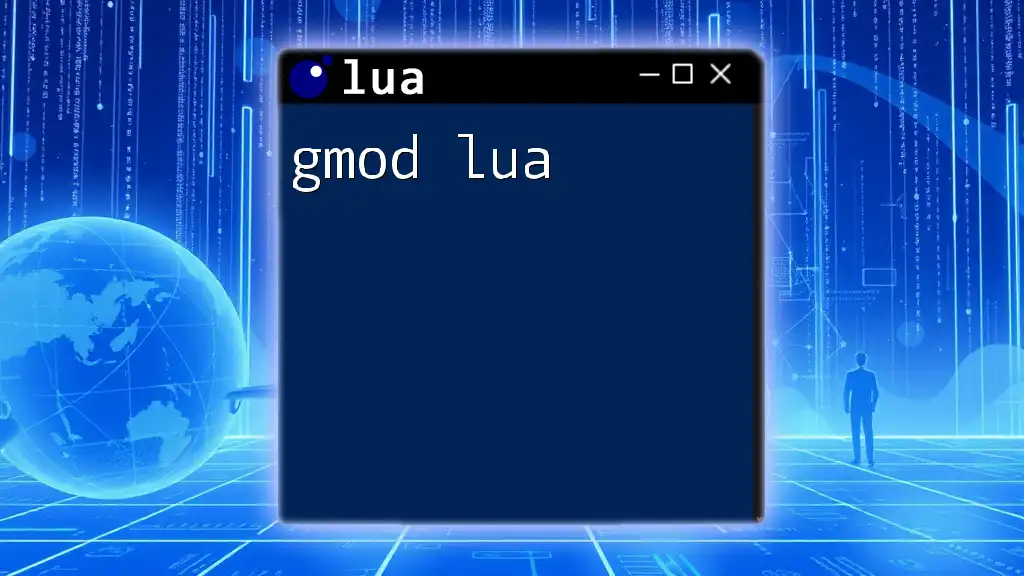Neovim allows users to enhance their editing experience by using Lua commands for configuration and plugin management, enabling greater customization and performance.
Here’s a simple example of setting up a basic Neovim configuration using Lua:
-- Basic Neovim settings using Lua
vim.o.number = true -- Enable line numbers
vim.o.relativenumber = true -- Enable relative line numbers
vim.o.tabstop = 4 -- Set tab width to 4 spaces
vim.o.shiftwidth = 4 -- Set indentation width to 4 spaces
vim.o.expandtab = true -- Convert tabs to spaces
Understanding Neovim and Lua
What is Neovim?
Neovim is an extensible and highly configurable text editor that builds upon Vim's capabilities. It aims to improve both the user experience and the core architecture of Vim by offering a more modern and efficient editing experience. Key features that set Neovim apart include:
- Asynchronous Job Control: Neovim allows background processes with real-time updates, enhancing performance when using plugins.
- Built-in Terminal Emulator: Users can run a terminal within Neovim, making it easier to execute commands without switching contexts.
- Improved Plugin Architecture: Neovim supports a robust way to develop plugins, providing more power and flexibility to developers and users.
Why Lua?
Lua stands out as a powerful scripting language specifically chosen to enhance Neovim's configuration and plugin development. Compared to Vimscript, Lua offers a more efficient, readable, and maintainable way to write and execute scripts. Here are some of the benefits of using Lua in Neovim:
- Performance: Lua is lightweight and fast, significantly improving startup time and execution compared to Vimscript.
- Simplicity: The syntax of Lua is more straightforward, which lowers the barrier to entry for those new to scripting.
- Scope and Flexibility: Lua allows for complex data manipulation via its tables, empowering developers to create sophisticated configurations and plugins.

Setting Up Neovim with Lua
Installing Neovim
Installing Neovim varies depending on your operating system. Here’s a brief guide:
-
macOS: You can install Neovim using Homebrew with the command:
brew install neovim -
Linux: Use your package manager, for example, on Ubuntu you can run:
sudo apt install neovim -
Windows: Download the latest release from the Neovim GitHub releases page and follow the installation instructions.
After installation, verify by running:
nvim --version
Configuring Neovim for Lua
To leverage the power of Lua, you will need to create and edit your configuration file, typically located at `~/.config/nvim/init.lua`. Here’s a simple structure to get you started:
-- init.lua
require('settings') -- Load custom settings
require('plugins') -- Load plugin configurations
require('keybindings') -- Configure key mappings
Each `require()` statement loads a separate file, allowing you to organize your configuration effectively.

Basic Lua Syntax for Neovim
Lua Basics
Understanding basic Lua syntax is essential for using it fluently in Neovim. Lua primarily uses variables, functions, and tables. For instance, a simple function to greet a user looks like this:
function greet(name)
print("Hello, " .. name)
end
This function concatenates strings to output a personalized greeting.
Utilizing Lua in Neovim
You can execute Lua scripts directly within Neovim, which simplifies testing and experimentation. To execute a simple Lua command, you might use:
:lua print("Hello, Neovim!")
Using this command, you can immediately see the output in your command-line interface inside Neovim.

Expanding Neovim Functionality with Lua
Creating Custom Commands
One of the powerful features of Neovim with Lua is the ability to define your own commands. This enhances workflow and customizability. Here’s how to create a new command:
vim.api.nvim_create_user_command('Greet', function()
print('Hello from Neovim Lua!')
end, {})
With this command, you can simply type `:Greet` in Neovim to see your message printed out.
Configuring Key Mappings
Custom key mappings can streamline your workflow and improve your efficiency in Neovim. The following example shows how to create a key mapping:
vim.api.nvim_set_keymap('n', '<leader>g', ':Greet<CR>', { noremap = true, silent = true })
This mapping makes it so that when you press `<leader>g`, it will trigger the `Greet` command we defined earlier, keeping your hands on the keyboard.
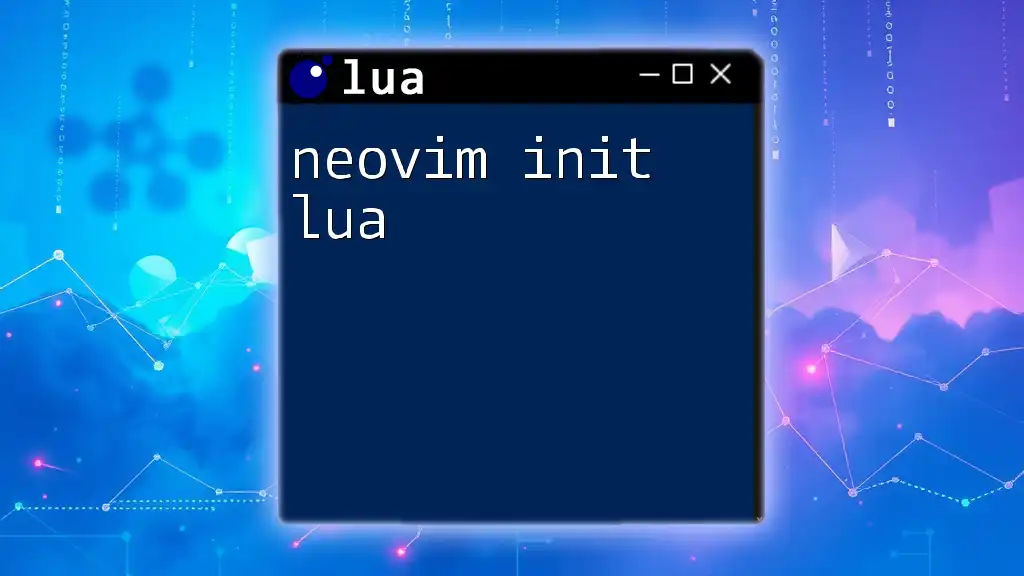
Integrating Plugins with Lua
Using Packer for Plugin Management
Managing plugins efficiently is vital for enhancing your Neovim experience. Packer is a popular plugin manager written in Lua. To get started, you’ll need to install it, then you can configure your plugins in `init.lua` like this:
require('packer').startup(function(use)
use 'nvim-treesitter/nvim-treesitter' -- Example plugin
use 'nvim-lua/plenary.nvim' -- Another example
end)
This code snippet initializes Packer and includes two popular plugins, preparing your environment for enhanced functionality.
Popular Lua-based Plugins
nvim-treesitter
This plugin provides a powerful and modern syntax highlighting experience. It leverages tree-sitter for parsing and works out of the box with minimal configuration:
require'nvim-treesitter.configs'.setup {
highlight = {
enable = true,
additional_vim_regex_highlighting = false,
},
}
This setup ensures that syntax highlighting works seamlessly across multiple file types.
telescope.nvim
Telescope is an excellent fuzzy finder for Neovim, vastly improving file and content navigation. A basic configuration for Telescope looks like this:
require('telescope').setup {
defaults = {
-- configuration options
}
}
This sets up the default options for Telescope, empowering you with a fast and efficient search experience.

Debugging and Troubleshooting Lua in Neovim
Common Errors and Fixes
Encountering errors while coding in Lua is part of the development process. Common error messages include syntax errors or undefined functions. To troubleshoot faster, use:
:messages
This command displays a log of recent messages, providing valuable context on what went wrong.
For quick debugging, consider using the `print()` function to output values and track variable states when a command doesn’t behave as expected.
Resources for Learning Lua
Expanding your knowledge of Lua can significantly enhance your experience with Neovim. Utilize the following resources:
- Online Courses: Look for courses on platforms like Udemy or Coursera that focus specifically on Lua and Neovim.
- Documentation: The [official Lua documentation](https://www.lua.org/manual/5.1/) is a fantastic resource for understanding the language in detail.
- Community Forums: Engage with communities on platforms like Reddit or the Neovim GitHub discussions to share knowledge and queries.
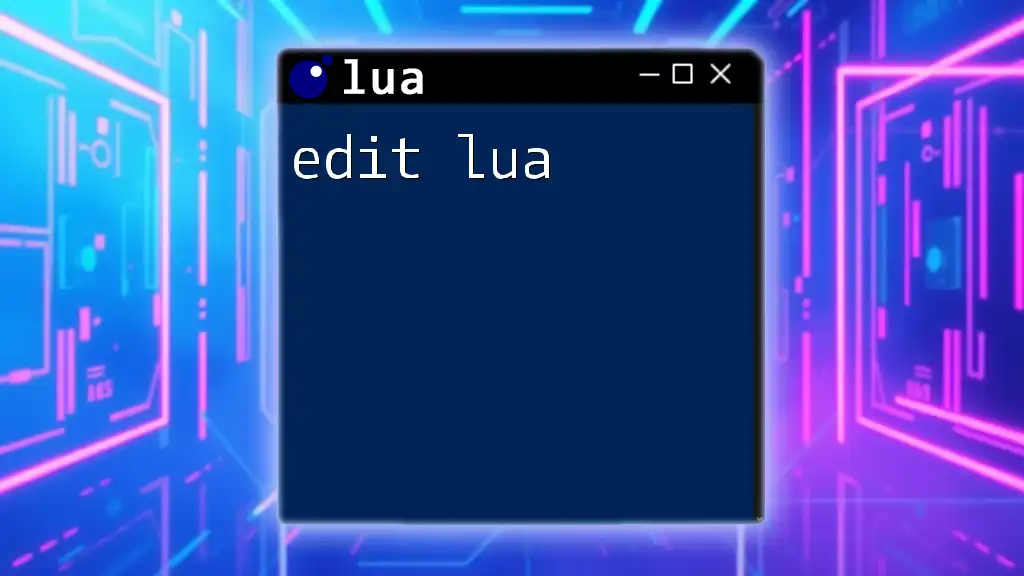
Conclusion
Neovim offers an incredible platform for developers and writers alike, and utilizing Lua expands its potential substantially. By understanding the fundamentals of Neovim and Lua, users can create efficient, custom workflows and environments tailored to their specific needs. Dive into the world of Neovim Lua, explore its capabilities, and make your coding experience truly yours.

Call to Action
To stay updated with tips and tutorials on Lua and Neovim, subscribe to our blog for future insights. Let us know what topics you'd like covered next to support your journey in mastering Neovim Lua!

